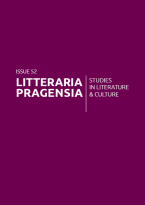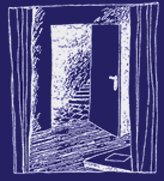
|
26.52 Versions of King LearEdited by: Martin Procházka, Michael Neill and David Schalkwyk Volume: 26 Issue: 52 December 2016 |
Contents
|
Martin Procházka
Introduction
|
1 |
|
Michael Neill
"Wherefore to Dover?": Seeing Nothing in King Lear
show abstract
King Lear is a play structured around the most brutal kinds of
anti-climax. For its first audiences, schooled by earlier versions of
the story - especially the old play with its elaborate romance ending -
Shakespeare's repeated foreshadowings of a happy resolution must have
seemed especially cruel. Instead the play seems to push towards a very
different kind of "promised end": the apocalyptic catastrophe that so
possessed the early modern imagination. Yet even this is withheld. This
principle of frustrated expectation and evacuated meaning strikingly
extends to the play's treatment of place, which takes advantage of the
bareness of the early modern stage to dislocate the audience's
imagination, leaving it without holdfast, suspended in a kind of
un-space that Shakespeare mockingly calls "Dover."
|
6 |
|
Brett Gamboa
Shakespeare Refinished: The Audience as Nahum Tate
show abstract
This article suggests that readers and audiences take after Nahum Tate when they encounter King Lear, "dazzled" by its "disorder" yet hounded by an irrepressible sense that it should behave differently than it does. In other words, King Lear exploits its status as a version and continuously invokes our awareness of potential or alternate versions of the plot, thereby forcing its audience to watch the play in progress as though against a backdrop of a play that might have been, the unrealized set of possibilities helping to enable a tragic experience of loss for the spectators that mirrors that experienced by the principal characters in the tragedy. The article suggests that obstacles to perception and judgment are laid out for the audience that parallel those faced by King Lear and Gloucester, and by their means the play creates expectations that it later undercuts or frustrates to leave spectators as bewildered and morally confused as the central characters. It goes on to explore how a sense of inertia is cultivated across the middle acts, creating tests of endurance for the spectators that again parallel those faced by the characters. Throughout, I suggest that such tests are more arduous, and the audience's empathy for the characters deeper, because of the play's implicit reminders of the paths it might have taken.
|
16 |
|
Tom Bishop
King Lear and Extremity
show abstract
This article argues that "extremity" is a useful overarching concept for approaching Shakespeare's designs in King Lear, that instances and concepts of the extreme are built into the text of the play and into the demands it makes on actors, and that these impulses or invitations to extremity have also migrated into the play's critical and performance histories. Specific points explored include the play's pre-eminence in the canon of Shakespeare's work in using certain lexical categories (especially comparative and superlatives of adjectives), the sustained reproduction of extremity in the language of criticism of the play, the orientation of performers of its roles on extreme deployments of the actor's body, the recent fashion for solo-performer adaptations of the play, and the influence of the play on other recent dramaturgies of extremity, particularly of extreme deprivation.
|
33 |
|
Diana E. Henderson
The Romance of King Lear: Genre and Modernity in Hobson's Choice and Life Goes On
show abstract
Although it was Shakespeare who was the outlier in retelling the story of King Lear as a tragedy, modern scholarship has been hard on those versions that have tried to redeem his suffering - from Nahum Tate's Restoration 'happy ending' onward. This article focuses on two films that use King Lear to comic and romantic ends: Hobson's Choice (directed by David Lean, 1954) and Life Goes On (directed by Sangeeta Datta, 2011). In remediating Harold Brighouse's play about a tyrannical, incontinent Lancastrian boot maker and his three daughters, Lean not only captures its Shakespearean echoes but adds new filmic ones, primarily through his visualization of situations only narrated in the 1915 playtext. Datta's transference of Lear's familial discord to a first-generation Bengali family in contemporary London goes even farther in quoting Shakespeare's play at crucial moments in the narrative. In each film, the juxtaposition serves to isolate the unreasonable father to the benefit of the daughters' narrative fates, while also allowing a dimension of sympathy (comic and sentimental, respectively) for men mentally unmoored from a lost political order. The analysis not only illuminates these two films but can also enrich current scholarly conversations about genre, gender, and Shakespeare's movement towards tragicomic romance.
|
49 |
|
Stephen Purcell
Synecdoches and Symbols: Fictional Performances of King Lear
show abstract
A number of narratives in film, television and popular fiction feature central characters, who watch or perform in a fictional production of King Lear. Shakespeare's text itself can be represented only synecdochally in such narratives, using key scenes and speeches to represent the play as a whole: this article examines the moments that are most frequently chosen. King Lear generally functions symbolically in these narratives, echoing some of the themes of the text in which it has been embedded: these tend to include old age, parent-child relationships, memory and mental decline, human cruelty, the frailty of the human body, and the indifference or inhospitality of the natural world. Intriguingly, fictional performances of King Lear are often also catalysts for some form of reconciliation or communal renewal in their frame narratives. This article considers the fictional stagings of King Lear in Centennial (1979), The Dresser (1980, 1983, 2015), The King Is Alive (2000), Slings and Arrows (2006), A Bunch of Amateurs (2008) and Station Eleven (2014) in order to explore the ways in which film, television and popular fiction offer overlapping and contrasting distillations of the play.
|
59 |
|
Stephannie S. Gearhart
Timescapes of Adaptation: Challenging Neoliberalism in Lear's Daughters
show abstract
Focusing on the temporal dimension of adaptations, I propose, illuminates, most broadly, the limitations of fidelity criticism and, more narrowly, the politics of the Women's Theatre Group's Lear's Daughters (1987). Because of the way in which they handle time, in particular their fluctuation between past, present, and future, adaptations call attention to what sociologist Barbara Adam has termed "timescapes." In order to illustrate this, I examine Lear's Daughters, which, by imagining the events preceding Shakespeare's play, presents time as malleable and multiple rather than static and singular. This notion of the temporal was in opposition to the kind of time privileged by proponents of neoliberalism in the 1980s, including then-Prime Minister Margaret Thatcher. Examining the temporal in Lear's Daughters reveals not only the play's engagement with its historical moment but also the inadequacies of fidelity criticism, which, like neoliberalism, relies on a conservative notion of time as singular and linear and thus fails to account for the inherent multiplicities of adaptations. Employing a time-centered theory such as this when studying adaptation, I suggest, has the potential to challenge neoliberalism as it values dialogue between the past, present, and future rather than collapsing these temporal categories into what Robert Hassan has called the "hypernow."
|
78 |
|
Emi Hamana
Translingual Performance of King Lear: Lear Dreaming as a Case Study
show abstract
Exploring translingual performances of Shakespeare's King Lear, this article discusses Lear Dreaming (2012) directed by Ong Keng Sen as a case study with a special focus on its environmental affordance, as well as a cognitive approach to scenography. The largely feminist version of Lear (1997) was adapted by Rio Kishida, a Japanese female playwright, and refashioned by Ong Keng Sen, a Singaporean director who is world-famous for his intercultural productions. In Lear Dreaming, Ong reduced the number of actors to four - two men and two women - with a team of Indonesian gamelan musicians. In several scenes, the elder daughter (acted by a Chinese pipa player) expresses her mind through music with surtitles rather than verbal exchanges. Lear Dreaming is distinguished by effective use of music, laser beams and other scenic means. A rare example of a translingual adaptation of Shakespeare's play, it is a thought-provoking, cutting-edge production, appropriate for a new age.
|
91 |
|
Martin Procházka
Beyond Pragmatism: Apocalypse, Adaptation and Historicity in King Lear and Some of Its Czech Versions
show abstract
The article regards adaptation as a form of the afterlife of a work of art that foregrounds its historicity. As an apocalyptic play which does not bring any revelation, King Lear may be said to represent historicity in widest terms. The first part of the article attempts to rectify pragmatic aspects of recent approaches to the adaptations of Shakespeare's works. The second part discusses two exemplary Czech adaptations of King Lear: Josef Kajetán Tyl's failure (1834) to use the play in the context of Romantic nationalism, and Jan Nebeský's recent production (2011), focusing on the paradoxical nature of historicity as "responsibility" for the past and the future.
|
107 |
|
Susan Bassnett
Afterword
|
121 |
|
Review of
Miriam Haughton
,
Mária Kurdi
Radical Contemporary Theatre Practices by Women in Ireland
Dublin: Carysfort Press, 2015. 251 pp.
→ Clare Wallace: Praxis and Politics: Irish Women Theatre Makers in the Twenty-First Century |
125 |
|
Review of
Barry Keane
Irish Drama in Poland. Staging and Reception 1900-2000.
Bristol and Chicago: Intellect, 2016. 174 pp.
→ Ondřej Pilný: "Peasant Literature" vs. Shaw and Beckett: Irish Drama in Twentieth-Century Poland |
128 |
|
Review of
Petr Chalupský
A Horror and a Beauty: The World of Peter Ackroyd's London Novels
Prague: Karolinum Press, 2016. 301 pp.
→ Josef Grmela: Between Horror And Beauty: London And History In Peter Ackroyd's Novels |
132 |


